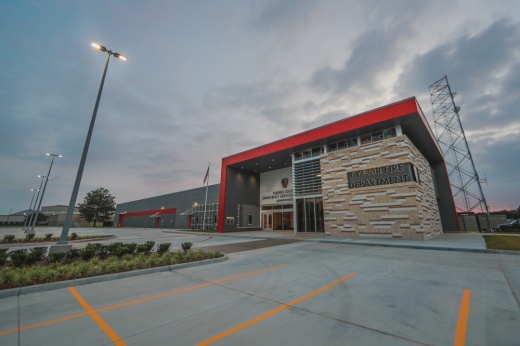According to the presentation, Tele911 has a no-cost implementation system that will add to the district's current emergency response system and help patients determine if an ambulance ride to an emergency room is necessary. Those who do require more intensive care but are resistant to ride to the emergency room can also be convinced to get potentially life-saving care through consultation with local doctors.
"They have created an established Texas medical group, which is Texas board-certified physicians who are actively working in emergency health care in ERs around Texas," Deputy Chief Chris Nations said. "When we reach out for assistance through Tele911, that is who we speak to. We don't speak to a doctor in California; we don't speak to doctors in Florida; we speak to Texas certified physicians."
This is done through contact with local doctors who will be contacted during an EMS response for a video meeting with the patient with the paramedics present. After the paramedics complete their assessment of the patient, the doctor will be called to provide a second opinion and inform patients whether medical intervention is necessary or if their ailment can be treated with prescriptions or the next day at an urgent care center.
The goal of this program is to assist those who need it most and to free up ambulances that would otherwise transport patients who are less likely to be admitted to the hospital, which is costly to both the patient and the department. Officials said Tele911 also aims to get patients who refuse care in serious situations to get the care they need. Doctors on call can help convince patients with warning signs of serious ailments to take their health and treatment seriously.
"We have that population of patients, for whatever reason, absolutely refuse to take the ambulance. They do not want our care; they do not want our transports even though our recommendation is that they go," Nations said. "That is a huge liability for the district and medical director to leave those patients behind. By using Tele911 services, our medics, using the department-issued phones on each medic unit, would reach out to Tele911 after doing a full assessment; talk to the physician who answers the phone via FaceTime; give the patient's status, condition and results of our evaluation; and turns the phone to the patient so that that physician can explain in greater detail the risks, the liability and the outcomes that may occur by not being transported by EMS."
Should a patient still refuse transport and care after the consultation, the liability of the refusal shifts to Tele911 instead of the responding crew and department.
Patients who require less intensive care can be connected to a Tele911 emergency physician to help weigh care options, such as going to an urgent care, at-home treatments, treatment in place by the paramedics or a visit to the emergency room.
"If a patient insists that they want to go to the hospital, we will still take them to the hospital. No questions asked," Nations said. "If they are comfortable with the solutions that Tele911 reached out to them with, they will follow that care plan, and we will leave the scene."
In all scenarios, the patient receives a follow-up call in 24 hours to ensure the patient got the care they needed. They will receive another call within 48 hours from one of Tele911’s social workers to provide any assistance or refer them to aid, such as a mental health professional, assistance in enrolling in governmental assistance or whatever aid they need.
"There is a social work component where a social worker will reach out," Nations said. "So they are touched three times by the health care continuance, our initial visit, the 24-hour post-call, then the social worker call back to find out if there are any social needs. Do they need access to home health care, do they need help enrolling in Medicaid, do they need to find prescription drug plans that work for them?"
A proposed second phase of the program would allow dispatch to filter low- and high-acuity calls and send ambulances to those who are more likely to need an emergency room while referring stable patients to alternative care centers or providing them with assistance in caring for themselves at home in the event of a sprained ankle or other injuries not requiring emergency intervention. At this time, the department is not planning to implement phase two of Tele911.
The commissioners and the department approved the implementation of Tele911, and commissioners said they are hopeful about the reduction of liability for the department caused by patient refusals of ambulance rides. Access to Tele911’s expansive resource network and a potential reduction of ambulances sent to emergency rooms were also among the benefits highlighted in the program. The program is tentatively scheduled to roll out Nov. 1.
"Tele911 has a massive network that we do not have access to that they can refer these patients to and help them with, including access to sobering centers, drug and alcohol treatment centers, and arrange for that transport to those locations," Nations said.





